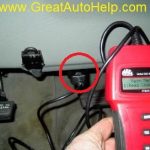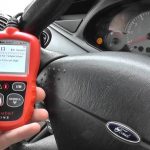If you’ve been wondering what each of the P0xxx codes on your car’s dashboard means, then read on. We’ll discuss the meaning of P0173 and how to diagnose the problems that it might indicate. You’ll also learn about the components involved in resetting engine trouble codes. For example, the “8” code could mean that a sensor has failed or your transmission is not working properly. You can also see if your car’s EGR valve is malfunctioning.
P0xxx codes are for engine trouble
Unless your car is a classic model, you will almost certainly have a P0xxx code when it’s experiencing engine trouble. These codes are generally generic across manufacturers and start with a P0 character. Those that begin with P1 are manufacturer-specific codes and often indicate a problem with something other than the emissions system. These codes may not illuminate your check engine light, but can indicate problems within the vehicle’s system.
If the P0xxx code is stored in the car’s computer memory, it means that there is a problem with the computer system. Typically, the PCM will tell your car that something is wrong, and the check engine light will illuminate. However, there are some instances where the problem is intermittent and not permanent. If the code is set by two consecutive warm-up cycles, it will clear itself out after 40 warm-up cycles.
Not all problems produce a DTC, so don’t assume that all of them are serious. A P0xxx code can mean something as minor as a sensor circuit being out of range or as complex as a problem with the emissions control system. However, to properly read the P0xxx code, you must first know where the trouble code is stored. Most cars store them in the Engine Control Module (ECU) or Powertrain Control Module (PCM), so it’s best to familiarize yourself with these locations.
P0173 is for EGR valve position sensor
If your car is throwing the P0173 engine trouble code, it means your EGR valve isn’t working properly. The problem may be a combination of various issues. First, make sure that the sensor is clean and working properly. Dirty sensors can be caused by many different problems, including a cracked or rusted manifold. The second most common cause of the code is a vacuum leak. This can occur from a broken seal on the dipstick or a sticking/leaky EGR valve. Finally, a leaking or sticking manifold gasket is another likely cause.
A failing EGR valve position sensor can cause a variety of problems, including drivability issues. This sensor is essential for the performance of the engine management system, and if the flow is too little, the engine can stall or detonate. This condition can cause DTC P0400 – P0408, which indicate that the EGR valve position sensor is malfunctioning.
Regardless of the specific cause of the P0173 engine trouble code, one of the easiest ways to fix it is to replace the sensor. Depending on the cause of the problem, a mechanic may recommend one or more repairs. If one or both repairs are necessary, they are outlined in the repair estimate. If the issue is something more serious, a mechanic may also recommend fixing the underlying trouble codes.
While the P0173 engine trouble code isn’t the most common issue, it is definitely important to have it checked by a professional. Faulty EGR system can result in poor gas mileage and failure to start or run. If you’re experiencing any of these symptoms, don’t hesitate to contact a professional mechanic. You’ll be glad you did. You’ve made the right decision!
P0174 is for rack-and-pinion assist motor
If the code P0174 comes up, it means that bank 2 of the engine does not have enough fuel or air. Extensive driving with this code may result in internal engine damage. This trouble code can be caused by several issues, including a faulty MAF sensor, clogged fuel injectors, or vacuum leaks. To diagnose the exact problem with your car, use the online repair service RepairPal, which will connect you with a reputable shop in your area that will repair the code and offer a minimum 12-month warranty.
The most common cause of this code is a faulty mass air flow sensor. This sensor is an essential component of the fuel injection system. If the sensor is dirty, it will send false readings to the engine’s electronic control module (ECU).
P0115 is for actuator
The P0115 error code is caused by a malfunction of an engine coolant temperature sensor. This sensor is triggered by too high or too low voltage levels. The PCM, also known as the engine control module, detects this malfunction and sets an error code. This error code applies to all vehicles manufactured since 1996. The symptoms and troubleshooting for this engine code differ depending on the make and model of your car.
To diagnose the code, start by recording freeze frame information and duplicating the code setting conditions. Make sure to compare the voltages at different road speeds, throttle position, and RPMs. The engine temperature should be monitored as well. The voltage of the Coolant Temperature Sensor should increase in tandem with the Intake Air Temperature Sensor. If the voltages do not match, the problem could be in the ECM.
Another reason for this code to occur is when the ECM does not receive a signal from the crankshaft position sensor at start-up. The signal can be missed by a number of factors, including a weak starter or a dead battery. In addition, there could be a problem with the sensor wiring harness. If you have a faulty actuator, the first thing you should do is replace the actuator.
If the problem is with the ECT, then the most likely cause is a faulty sensor. This sensor responds to accelerator pedal movement and records this information in the PCM. The ECM also monitors the temperature of the engine coolant through the sensor after start-up. Other causes include low coolant, a stuck thermostat, or a faulty sensor. The sensor may be the cause of this code, but it can also be caused by a faulty wire or a faulty thermostat. Almost all P0125 codes can be fixed by simply replacing the sensor.
P0010 is for actuator
The most common cause of a P0010 engine trouble code is a worn timing component. While these parts have regular service intervals, they can eventually fail. When the timing is off, the engine cannot adjust the camshaft to the speed of the engine, and the camshaft is unable to perform its tasks properly. If you have this code, it is vital to have it diagnosed by a qualified mechanic before it can lead to a costly repair.
This code can be caused by a number of different problems. For example, if the engine is misfiring or exhibiting a significant performance drop, it is likely that there is a more serious problem with the engine. The best way to determine the severity of the problem is to avoid driving the vehicle until it is repaired. In addition to a faulty timing sensor, P0010 may also be caused by a worn-out sensor or faulty wiring. If this is the case, you should have the ECM updated and the sensors properly connected.
If you have a camshaft position actuator problem, the check engine light may be flashing. The engine may also be running rough or shaky. If this is the case, it’s likely that the actuator has become damaged and needs to be repaired. A good place to start is the camshaft position actuator, bank 1 A, which is located on the top of the engine. Torx T-25 bolts hold it in place.
Timing sprocket and actuator replacement are common solutions to this engine problem, but these are costly and ineffective fixes. You should seek assistance from a professional mechanic to ensure that the correct component is repaired. Otherwise, the problem may return again in a few months. You can also try cleaning the actuator solenoid and flushing the engine to clear the P0010 error code. These are both simple solutions, but you should always take a thorough diagnosis before replacing expensive components.






